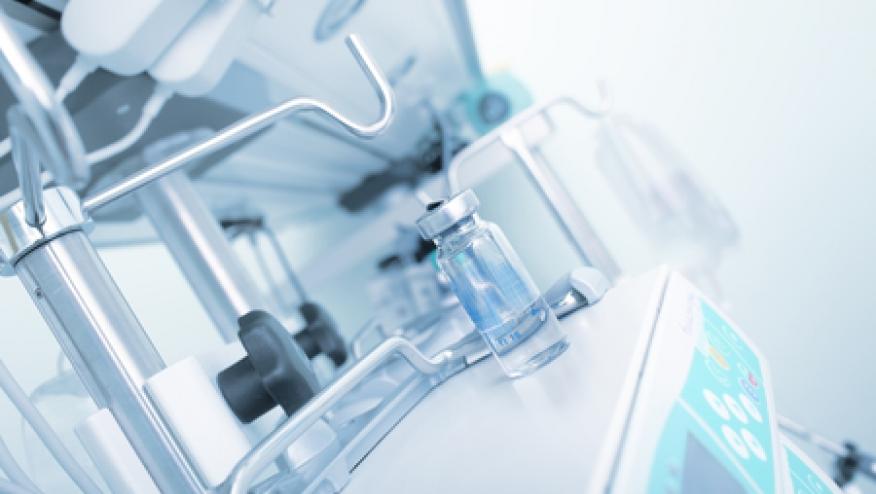Ultra-Low Dose Rituximab Controls Disease Activity in RA Save

New research presented this week at ACR Convergence, the American College of Rheumatology’s annual meeting, shows that in one study, the majority of rheumatoid arthritis patients on an ultra-low dose of the drug rituximab maintained low disease activity for up to four years, and rarely needed to switch to other biologic drugs or glucocorticoids to control their disease (Abstract #1443). This will be presented Monday, at 2:15PM EST in a session RA – Treatments II: New Findings in Established Therapies (1442–1445).
Rheumatoid arthritis (RA) is the most common type of autoimmune arthritis. It is caused when the immune system (the body’s defense system) is not working properly. RA causes pain and swelling in the wrist and small joints of the hands and feet.
The optimal dose of rituximab for RA treatment remains unclear, and both 1,000 and 2,000 milligram doses every six months have been shown to be equally effective in previous studies. In another recent trial, six-month efficacy of ultra-low rituximab doses of 200 mg and 500 mg were compared to the 1,000 mg dose. Patients in that trial were invited to participate in this new extension trial to follow their progress on ultra-low doses of rituximab for up to four years.
“We conducted this extension (study) to build on the results of the original trial. In that study, the effects of 200 and 500 mg appeared to be similar to those of 1,000 mg, but we could not yet show that statistically,” says Nathan den Broeder, MSc, a PhD student at Sint Maartenskliniek in the Netherlands and the study’s co-author. “There was also a concern that the lower doses might work for a limited time, but then lose their effect on a longer time frame.”
Data was collected on patients’ disease activity through April 2021 measured by disease activity scores, or DAS-28, and C-reactive protein levels, and their use of RA medications, including biologic or targeted disease-modifying anti-rheumatic drugs (DMARDs), conventional synthetic DMARDs and glucocorticoids. The primary outcome for the study was disease activity, and secondary outcomes included rituximab persistence, doses and intervals, as well as use of other RA medications.
Out of 142 patients in the previous trial, 118 were included in this new extension study, with a mean follow-up period of 3.2 years. Seven patients switched to another biologic or targeted synthetic DMARD and were then removed from the disease activity analyses. Researchers found that patients taking either ultra-low dose rituximab had non-inferior disease activity compared to those on 1,000 mg. The median yearly rituximab dose was 978 mg. The final rituximab dose per infusion was 200 mg in 37 patients, 500 mg in 47 patients, and 1,000 mg in 34 patients. The median final interval between infusions was 6.0 months for those on 200 mg, 6.2 months for those on 500 mg, and 6.4 months for those on 1,000 mg. The need for glucocorticoid treatment, typically required with patients’ disease flares, was low: 0.38 steroidinjections per patient-year and 0.05 initiations or dose increases of oral glucocorticoids per patient year.
The study’s results show that most patients in the trial who were treated with ultra-low dose rituximab remained on these doses, in some cases for up to four years, maintained low disease activity, and their disease activity did not differ in any relevant way between doses. Patients on ultra-low doses of rituximab rarely needed to switch to other disease-modifying drugs or use glucocorticoids.
“Ultra-low dose rituximab is effective in many patients who already responded well to higher doses. The benefits are significant: we showed in the original trial that ultra-low dose rituximab results in fewer infections compared to the standard 1,000 mg dose, something that is especially relevant in the current pandemic,” says den Broeder. “Another benefit is that the duration of the infusion, which can normally take several hours, can be shortened with administering these lower doses. Finally, there are important cost-savings with using ultra-low dose rituximab, a relatively expensive drug. In short, by using ultra-low dose rituximab, patients can expect fewer infections as side effects, shorter infusion times, and lower treatment costs.”









If you are a health practitioner, you may Login/Register to comment.
Due to the nature of these comment forums, only health practitioners are allowed to comment at this time.